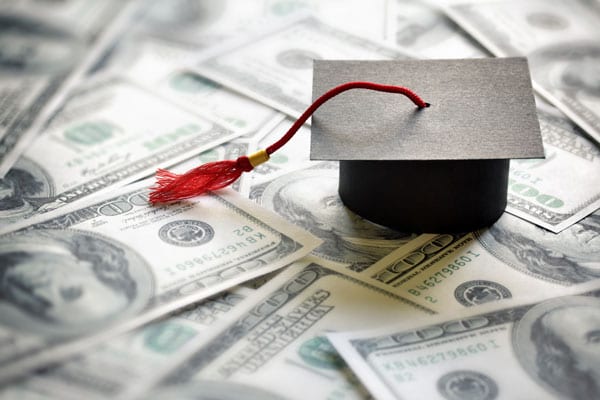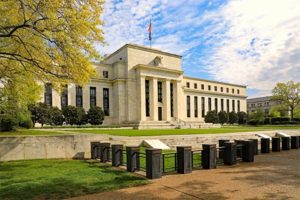Borrowers Get Another Way To Repay Student Loan Debt
The U.S. Department of Education (DOE) announced it was imposing regulations to prevent colleges from steering students to specific debit and prepaid cards for use with federal grant and loan money.
The DOE also said that it was dramatically improving payback opportunities for the 43.4 million Americans who have student loan debt. The DOE will start a program in December called Revised Pay As You Earn (REPAYE), which caps monthly payments at 10% of the borrower’s annual income.
Secretary of Education Arne Duncan hailed the news as proof the government was looking out for college students. Duncan failed to note the irony of his department making it easier for borrowers to dig out of a $1.3 trillion deep hole that DOE loan programs helped create. More on that in a moment.
New DOE Rule Protects Students
First, the good news: The new DOE regulations provide Students some defense against colleges who were being paid to make customers out of the students for banks and card companies issuing debit and prepaid cards.
The colleges would tell students or parents they had to open an account with a specific bank or card company in order to receive Pell Grant or Direct Loan funds. In return, the banks and card companies would provide monetary rewards to the schools. The DOE estimated that nine million students were affected and $25 billion in grants and loans was involved.
The banks and card companies compounded the problem by assessing what the DOE called “excessive” and “confusing” fees for overdraft and transaction swipes. The extra money derived from the fees was a win-win for colleges and card companies, but a loss-loss for students, many of whom were learning for the first time how debit and prepaid cards work.
“Since day one, protecting students and borrowers has been a key priority for the Obama Administration,” Duncan said in a press release. “These regulations … bring overdue reforms to campus cards, a sector that too often puts taxpayer dollars and student consumers at risk.”
Relief For Those In Debt
The second half of the DOE announcements had to do with the introduction of REPAYE, an income-based repayment program that welcomes everyone with federal student loans, even those who formerly weren’t eligible because they took out loans before 2007.
REPAYE welcomes anyone who has a federal loan to the program. Some student debtors will have to consolidate their federal loans to squeeze inside the new rules, but as is the case with virtually every aspect of this federal loan program, just sign a few papers and it’s done.
Duncan said that the new regulations would “… help make sure student loan debt is affordable for all borrowers.”
That might be news for the seven million borrowers who are severely delinquent, meaning they haven’t made a student loan payment in more than a year. The Federal Reserve Bank of New York said that average debt for borrowers has double in the last 10 years and that 11.3 percent of outstanding student debt is in default.
Irony Abounds In Student Loans
The irony here, of course, is that the DOE’s lax qualifying standards helped create the mess it is now trying to crawl out from under. Undergraduate students can receive up to $57,500 in federal loans while earning a degree. There is no limit – or credit check – on how much debt graduate school students can ring up. They may borrow the full cost of attendance to cover tuition, room, board, books etc.
That has helped graduating classes at every level set records for being in debt. Here are the averages for the Class of 2015:
- Average debt for undergraduates: $35,000
- Average for graduate school: $57,600
- Average for law school: $141,000
- Average for medical school: $162,000
The New York Federal Reserve said that that 1.82 million people owe more than $100,000 in student loan debt, five times as many as had that much debt a decade ago. Now all of them have an opportunity to pay it back at 10% of their annual income allocated per month.
And here is the last bit of irony lost on everyone but the accountants The U.S. government made $51 billion from student loan interest payments in 2013. It expects to take in another $133 billion between now and 2023, according to the Congressional Budget Office.
Sources:
- Holland, K. (2015, June 15) The high economic and social costs of student loan debt. Retrieved from http://www.cnbc.com/2015/06/15/the-high-economic-and-social-costs-of-student-loan-debt.html
- Smith, N. (2015, April 17) Three Charts Explain the Student Loan Mess. Retrieved from http://www.bloombergview.com/articles/2015-04-17/washington-may-not-want-to-get-out-of-student-debt
- Delisle, J. (2014, March 25) Graduate Student Debt Review. Retrieved from https://www.newamerica.org/education-policy/the-graduate-student-debt-review/
- Mitchell, J. (2015, August 21) School-Loan reckoning: 7 Million Are in Default. Retrieved from http://www.wsj.com/articles/about-7-million-americans-havent-paid-federal-student-loans-in-at-least-a-year-1440175645?alg=y&mg=id-wsj
- Sanchez, J., Zhu, L. (2015, April 10) Student Loan Delinquency: A Big Problem Getting Worse? Retrieved from https://research.stlouisfed.org/publications/economic-synopses/2015/04/10/student-loan-delinquency-a-big-problem-getting-worse/


















